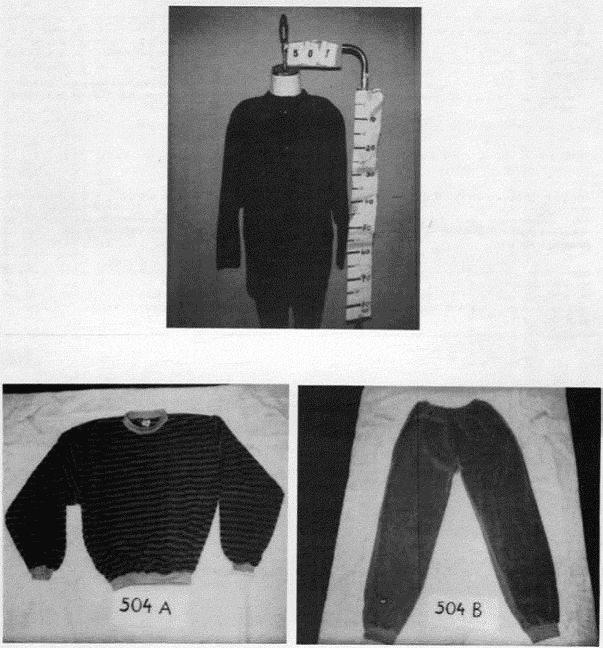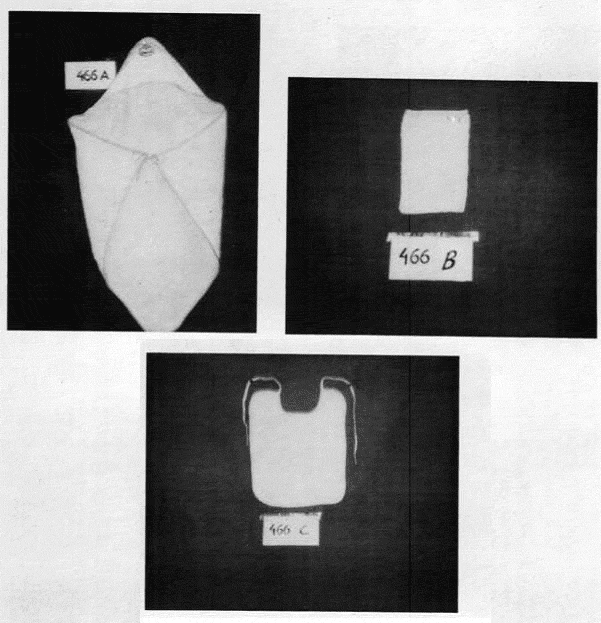
COMMISSION REGULATION (EEC) No 1911/92of 9 July 1992 concerning the classification of certain goods in the Combined Nomenclature - "Official Journal of the European Communities", No L 192/23 of 11.7.1992 - |
THE COMMISSION OF THE EUROPEAN COMMUNITIES,
Having regard to the Treaty establishing the European Economic Community,
Having regard to Council Regulation (EEC) No 2658/87(1) on the tariff and statistical nomenclature and on the Common Customs Tariff, as last amended by Commission Regulation (EEC) No 1039/92(2), and in particular Article 9,
______________
(1) OJ No L 256, 7. 9. 1987, p. 1.
(2) OJ No L 110, 28. 4. 1992, p. 42.
Whereas in order to ensure uniform application of the combined nomenclature annexed to the said Regulation, it is necessary to adopt measures concerning the classification of the goods referred to in the Annex to this Regulation;
Whereas Regulation (EEC) No 2658/87 has set down the general rules for the interpretation of the combined nomenclature and these rules also apply to any other nomenclature which is wholly or partly based on it or which adds any additional subdivisions to it and which is established by specific Community provisions, with a view to the application of tariff or other measures relating to trade in goods;
Whereas, pursuant to the said general rules, the goods described in column 1 of the table annexed to the present Regulation must be classified under the appropriate CN codes indicated in column 2, by virtue of the reasons set out in column 3;
Whereas it is appropriate that, subject to the measures in force in the Community relating to double checking systems and to prior and retrospective Community surveillance of textile products on importation into the Community, binding tariff information in the matter of classification of goods in the combined nomenclature issued by the customs authorities of the Member States which no longer conform to this Regulation may continue to be invoked in accordance with the provisions of Article 6 of Commission Regulation (EEC) No 3796/90(3) by the holder thereof during a certain period if such holder has concluded a contract as referred to in points (a) or (b) of the second subparagraph of Article 14, (3) of Council Regulation (EEC) No 1715/90(4); Whereas the measures provided for in this Regulation are in accordance with the opinion of the Nomenclature Committee as regards products Nos 1, 3, 4, 5, 6, 7, 8, 9 in the annexed table;
____________
(3) OJ No L 365, 28. 12. 1990, p. 17.
(4) OJ No L 160, 26. 6. 1990, p. 1.
Whereas the Nomenclature Committee has not delivered an opinion within the time limit set by its chairman, as regards product No 2 in the annexed table,
HAS ADOPTED THIS REGULATION:
Article 1
The goods described in column 1 of the annexed table are now classified within the combined nomenclature under the appropriate CN codes indicated in column 2 of the said table.
Article 2
Subject to the measures in force in the Community relating to double checking systems and to prior and retrospective Community surveillance of textile products on importation into the Community, binding tariff information in the matter of classification of goods in the combined nomenclature issued by the customs authorities of the Member States which no longer conform to this Regulation may continue to be invoked in accordance with the provisions of Article 6 of Regulation (EEC) No 3796/90 by the holder thereof during a period of 60 days from the date of application of this Regulation if such holder has concluded a contract referred to in points (a) or (b) of the second subparagraph of Article 14 of Regulation (EEC) No 1715/90.
Article 3
This Regulation shall enter into force on the 21st day following its publication in the Official Journal of the European Communities.
This Regulation shall be binding in its entirety and directly applicable in all Member States.
Done at Brussels, 9 July 1992.
For the Commission
Christiane SCRIVENER
Member of the Commission
ANNEX
Description of goods |
Classification CN code |
Reasons |
(1) |
(2) |
(3) |
1. Lightweight knitted garment (100 % cotton), of one colour, intended to cover the upper part of the body, reaching down below the waist, with long sleeves. It has a round close fitting neckline with a high sewn-on ribbing (4 cm hight). |
6106 10 00 |
The classification is determined by the provisions of general rules 1 and 6 for the interpretation of the combined nomenclature and Note 4 to Chapter 61, as well as by the wording of CN codes 6101 and 6106 10 00. |
2. Set of two garments put up for retail sale made up of: |
6108 31 90 |
The classification is determined by the provisions of general rules 1 and 6 for the interpretation of the combined nomenclature, note 8 of Chapter 61 as well as the wording of CN codes 6108, 6108 31 and 6108 31 90. |
3. 100 % cotton knitted garment intended to cover the upper part of the body to below the waist, having a collar crossing right over left, with no opening, of ribbed knitted material, with short sleeves. |
6110 20 99 |
The classification is determined by the provisions of general rules 1 and 6 for the interpretation of the combined nomenclature and the wording of CN codes 6110, 6110 20 and 6110 20 99. See also the explanatory notes to the combined nomenclature relating to CN code 6110. |
4. 100 % synthetic knitted garment intended to cover the upper part of the body to below the waist, having a collar with no opening, long sleeves and a hem at the bottom The garment also has a triangular ribbed knitted insert at the front of the neckline (see photograph No 452)(*). |
6110 30 99 |
The classification is determined by the provisions of general rules 1 and 6 for the interpretation of the combined nomenclature and the wording of CN codes 6110, 6110 30 and 6110 30 99. See also the explanatory notes to the combined nomenclature relating to CN code 6110. |
5. Garment made of cellular rubber covered on both sides by knitted fabric, intended to cover the lower part of the body from the waist to below the knees, enclosing the legs separately, without an opening. The seams of the garment are covered by an elastic tape (shorts) (see photograph No 503)(*). |
6113 00 10 |
The classification is determined by the provisions of general rules 1 and 6 for the interpretation of the combined nomenclature, by note 1 (e) to Chapter 95, as well as the wording of CN codes 6113 and 6113 00 10. |
6. Knitted stocking-type footwear of textile fibres (85 % acrylic, 13% nylon, 2 % other fibres), without applied soles, with anti-skid PVC strips on the sole to aid walking on polished or slippery surfaces (see photograph No 467)(*). |
6115 93 99 |
The classification is determined by the provisions of general rules 1 and 6 for the interpretation of the combined nomenclature and the wording of CN codes 6115, 6115 93 and 6115 93 99. |
7. Composite presentation of made-up textile articles of 100 % cotton terry towelling fabric, put up for retail sale, comprising: |
|
The classification is determined by the provisions of general rules 1 and 6 for the interpretation of the combined nomenclature, the wording of CN codes 6209, 6209 20 00, 6302, and 6302 60 00. These textile articles cannot be considered to form a set. |
(a) article to be worn by a baby, consisting of a rectangular shape with a hood on one side bearing an applied decorative motif. At two corners are two strips to be tied at the waist (bathrobe) (see photograph No 466 A) (*); |
6209 20 00 |
|
(b) rectangular mitt-type flannel (see photograph No 466 B)(*); |
6302 60 00 |
|
(c) bib with two strips to be tied round the neck (see photograph No 466 C)(*). |
6209 20 00 |
|
8. Item made up of knitted elasticated fabric encasing the ankle and part of the foot, with an aperture for the heel. The ends and the edges of the aperture are fitted with rubber strips for tigthening (ankle support); (see photograph No 469)(*). |
6307 90 10 |
The classification is determined by the provisions of general rules 1 and 6 for the interpretation of the combined nomenclature, by note 1 b) to chapter 90 and the wording of CN codes 6307, 6307 90 and 6307 90 10. |
9. Item made up of cellular rubber covered on both sides by knitted fabric, encasing the knee and part of the leg, with an aperture for the kneecap. An elastic tape covers the seam at the back (knee support) (see photograph No 502)(*) |
6307 90 10 |
The classification is determined by the provisions of general rules 1 and 6 for the interpretation of the combined nomenclature, by note 1 b) to chapter 90 and the wording of CN codes 6307, 6307 90 and 6307 90 10. |
(*) The photographs are of a purely illustrative nature.



